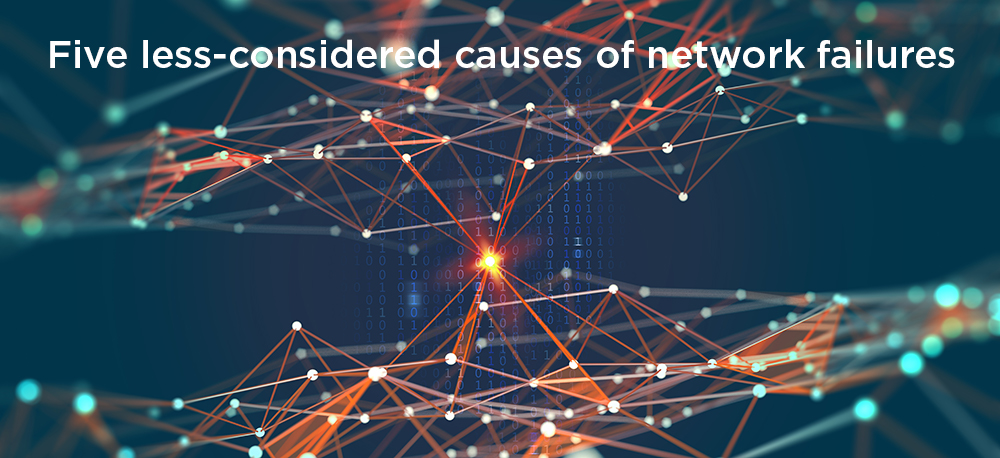Network recovery used to be straight forward. However, with the advent of complex arrangements such as hybrid cloud computing, security, virtual servers, and the massive pressure cloud migration and mobility put on networks, recovering from a network crash has become a complicated endeavor. It is also worth noting that networks fail for more reasons than just disasters. There are numerous reasons why network recovery services would be necessary, including:
3. Internet conncetion failure
Still, too many companies lack proper focus on network recovery. Traditional networking architectures recommend that the hub of the network should attach to a specific location – a data center or the organization’s headquarters. Although this formula has been a standard operating procedure for many years, it is out of touch with the reality of many enterprises today.
1. Equipment failure
Routers, switches, hubs, access points, network cards and modems are just some of the equipment that can fail. Failure of any of these immediately affects all the devices connected to them including endpoint devices.
2. Cascading failure
Networks rely on many interrelated parts working together. Should one of these parts, for example, a node or route, becomes overloaded, it will crash. These individual crashes for the network to reroute leading to the next node to crash from an overload. This creates a cascade of node failures.
3. Internet connection failure
An internet connection failure is one of the most common reasons for a connectivity failure. It is therefore not always the condition of the equipment that causes the issue but an issue from the internet service provider’s side.
4. Human error
Human error should not be ruled out and can be the cause of a network failure. Mishandling network equipment and misconfiguring network devices are but two such errors.
5. Network attack
Organizations can fall victim to a targeted network attack that disrupts network services and ultimately brings the business to a standstill. The aim of these attacks is usually to extort money and include DDoS attacks, “ping of death” and browser-based attacks.
Typically network carriers focus on internet connectivity and BC/DR companies focus on business continuity services. Stage2Data has brought these two services together and now offer something that no one else in North America currently offers – Network Recovery as a Service. In addition, Stage2Data is also a certified Internet Service Provider (ISP). Standard Disaster Recovery/Business Continuity (DR/BC) companies offer full network recovery of the local area network. But unless they are also the client’s Internet Provider (ISP/carrier), they cannot offer full NRaaS.
Until March 15th, 2020 receive 26% off any new Network Links that you sign up for with Stage2Data.
Layman's Guide to
Business Continuity Planning
Interested to read more about Network Recovery-as-a-service? Read more below:
What is Network Recovery as a Service (NRaaS) and why do I need it?
Why you should consider Stage2Data’s as-a-service solutions
Press release: Stage2Data Announces Strategic Partnership with Universal Compute Xchange (UCXmarket)



